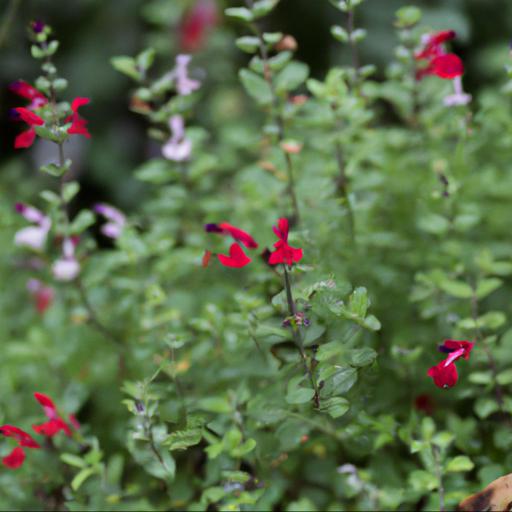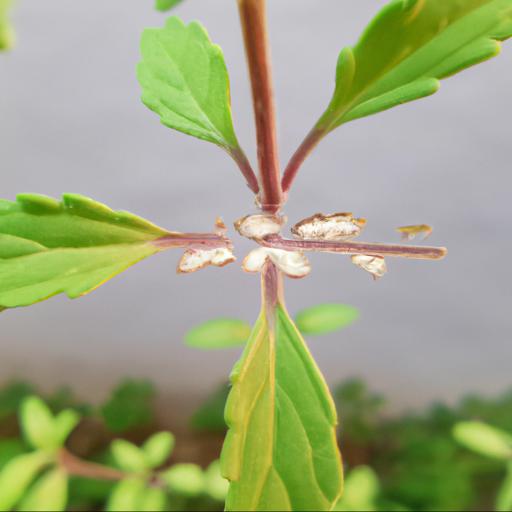Salvia microphylla var. microphylla is a beautiful flowering plant native to Mexico, Arizona and New Mexico. It is a member of the mint family and is known for its vibrant red, pink and white flowers.
This hardy plant is perfect for adding color and texture to any garden. It is easy to grow and maintain, and is a great choice for beginner gardeners.
Salvia microphylla var. microphylla is drought-tolerant and can tolerate a wide range of temperatures. It is also resistant to most pests and diseases.
With its attractive blooms and low maintenance requirements, Salvia microphylla var. microphylla is an excellent choice for any garden.
Benefits of growing salvia microphylla var. microphylla

Growing Salvia microphylla var. microphylla in the UK garden has its own benefits.
This flower is a beautiful, small shrub named for its attractive serrated, dark green leaves. It also produces clusters of two-lipped vibrant purple blooms, appearing from May to October. It’s perfect for bees, butterflies, and other pollinators and is low maintenance.
Aside from its vigorous growth, Salvia microphylla var. microphylla is also drought tolerant. This makes it perfect for a hot, dry summer, as it requires little water once established.
It also thrives in full sun conditions and is salt, wind and pollution tolerant. Making it an ideal choice for coastal and windy areas.
Furthermore, Salvia microphylla var. microphylla is easy to propagate. Cuttings can be taken between April and August, rooting easily in a pot filled with soil and grit.
Furthermore, it can also be grown from seed, sown in a sunny spot, in early spring and will flower the same year. In conclusion, Salvia microphylla var.
microphylla is a perfect choice for any UK garden. Not only is it incredibly easy to propagate, but it’s also low maintenance and drought tolerant. Therefore, it’s an ideal choice for gardeners looking for a stunning, vibrant flower that can be easily enjoying during the summer months.
Tips for planting and caring for salvia microphylla var. microphylla

When it comes to planting and looking after salvia microphylla var. microphylla, gardeners in the UK have to be mindful of the variations of this species. Salvia microphylla is a type of shrub which grows to a height of up to four feet and is quite popular as a garden ornamental.
The variety microphylla is especially well-suited to the UK climate, given its tolerance of both sun and shade. For planting, it’s best to choose a location in your garden that’s not in direct sunlight, though a lightly shaded spot with morning sun is ideal.
Too much sun will dry the soil out and leave your plant wilting. You’ll also need to make sure you’re planting in a spot with well-draining soil, as wet, heavy soil can lead to root rot and other problems.
Once your salvia microphylla is planted, you’ll need to make sure to water it regularly, especially during dry spells. While it doesn’t need much water, giving it a deep soaking each week or so will help it stay healthy. On the other hand, be sure not to overwater it, as this can lead to root rot and other problems.
In terms of caring for your salvia microphylla, you may find yourself trimming it back a few times a year to keep it looking neat and tidy. Doing so will also help encourage bushier, fuller growth as well.
You can also add a layer of mulch around the base of the plant to help keep the soil moist and cool. With the right care and attention, your salvia microphylla var. microphylla will reward you with beautiful blooms throughout the season.
Common pests and diseases of salvia microphylla var. microphylla

As a UK garden expert, I know that Salvia microphylla var. microphylla, commonly known as baby sage, makes a great addition to any outdoor area.
However, just like any other plant, it can be susceptible to pests and diseases if not managed correctly. There are a few common pests that are attracted to baby sage. These include aphids, mealybugs, and scale insects.
Aphids tend to attack the stems and underside of leaves, sucking the sap out of them and causing them to yellow, wilt, and die. Mealybugs are small, soft-bodied insects that can be found in clusters on the tips of stems and underneath leaves. They suck the plant’s sap and excrete honeydew, which can lead to a black, sooty mold growth.
Lastly, scale insects can cause leaves to yellow, dry up, and eventually fall off. Fortunately, these pests can often be managed with the appropriate pest control measures.
An insecticidal soap is usually effective at removing aphids, mealybugs, and scale insects from baby sage plants. Alternatively, a horticultural oil is a great way to smother adult and juvenile insects, as well as disrupting the insect-reproduction cycle.
It is also important to remember that proper watering and fertilising techniques can help to ensure that plants have enough resources to fight off pests and diseases. In addition to pests, baby sage can also be prone to a few fungal diseases. These include powdery mildew, rust, and leaf spot.
Powdery mildew will cause a white, powdery coating on the leaves, while rust might present with orange sporulation spots on the leaves. Leaf spot will present with circular to oval tan and brown spots on the leaves, which can eventually cause the leaves to yellow, dry up, and drop off. All these diseases can be treated with a fungicidal spray. In conclusion, although salvia microphylla var. microphylla is generally an easy to manage plant, take care to watch out for common pests and diseases. If you spot their symptoms early, you can usually treat them with the appropriate pest control measures and a fungicidal spray.
Conclusion
Salvia microphylla var. microphylla is a small shrub native to the southwestern United States and Mexico. It is an evergreen shrub with small, glossy green leaves and bright red flowers.
This variety is drought-tolerant and can be used in xeriscape gardens. Its flowers attract bees, butterflies, and hummingbirds, making it a great choice for wildlife gardens.
It is a low-maintenance plant and can tolerate a wide range of soils. With its attractive foliage and bright red flowers, Salvia microphylla var. microphylla is a great addition to any garden.
FAQ
What is the scientific name of Salvia microphylla var. microphylla?
The scientific name of Salvia microphylla var. microphylla is Salvia microphylla var. microphylla.
What are the characteristics of Salvia microphylla var. microphylla?
Salvia microphylla var. microphylla is a small shrub with a dense, bushy habit. It has small, bright green, oval-shaped leaves and produces small, bright pink flowers in the summer. It is drought-tolerant and can tolerate a range of soil types. It is an evergreen plant that can reach up to 3 feet in height.
Where is Salvia microphylla var. microphylla native to?
Salvia microphylla var. microphylla is native to Mexico and Central America.
How is Salvia microphylla var. microphylla used in landscaping?
Salvia microphylla var. microphylla is often used in landscaping as an ornamental shrub due to its attractive foliage and colorful flowers. It can be used as a border plant, in containers, or as a specimen plant.
What are the common names for Salvia microphylla var. microphylla?
The common names for Salvia microphylla var. microphylla are Baby Sage, Little Leaf Sage, and Scarlet Sage.
What are the benefits of growing Salvia microphylla var. microphylla?
The benefits of growing Salvia microphylla var. microphylla include its attractive foliage, its drought tolerance, its ability to attract pollinators, and its ability to tolerate a wide range of soil types. It is also a low-maintenance plant that is easy to care for.

